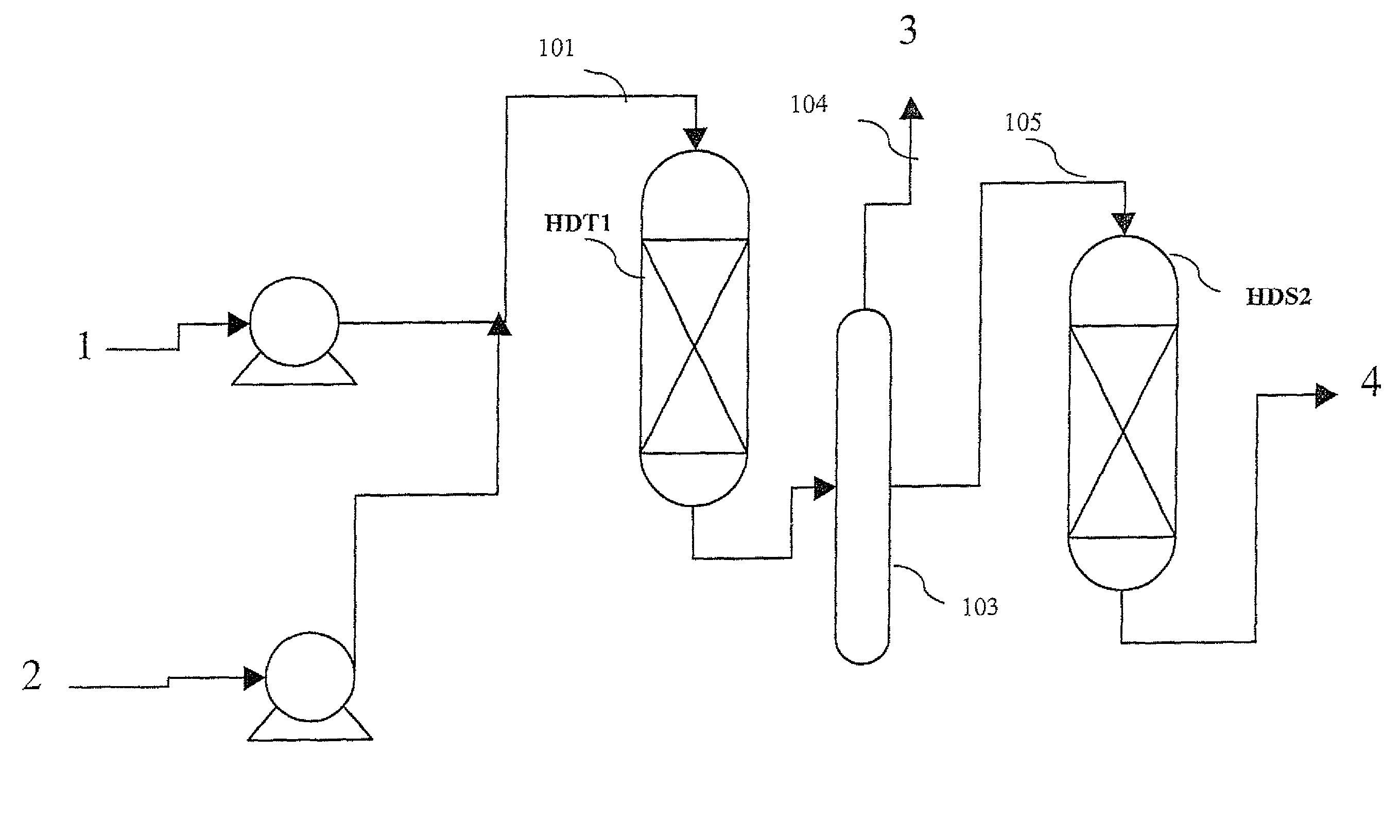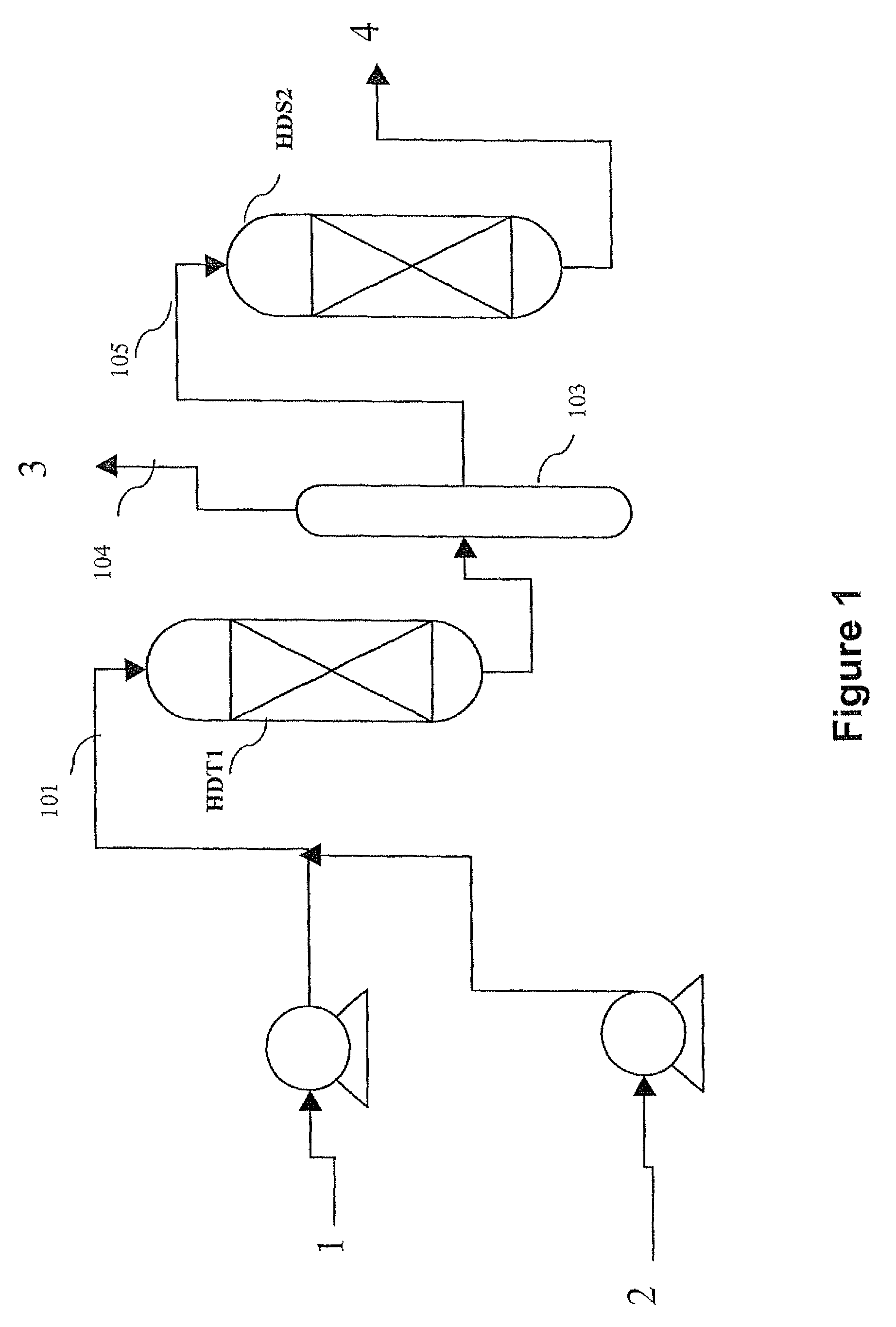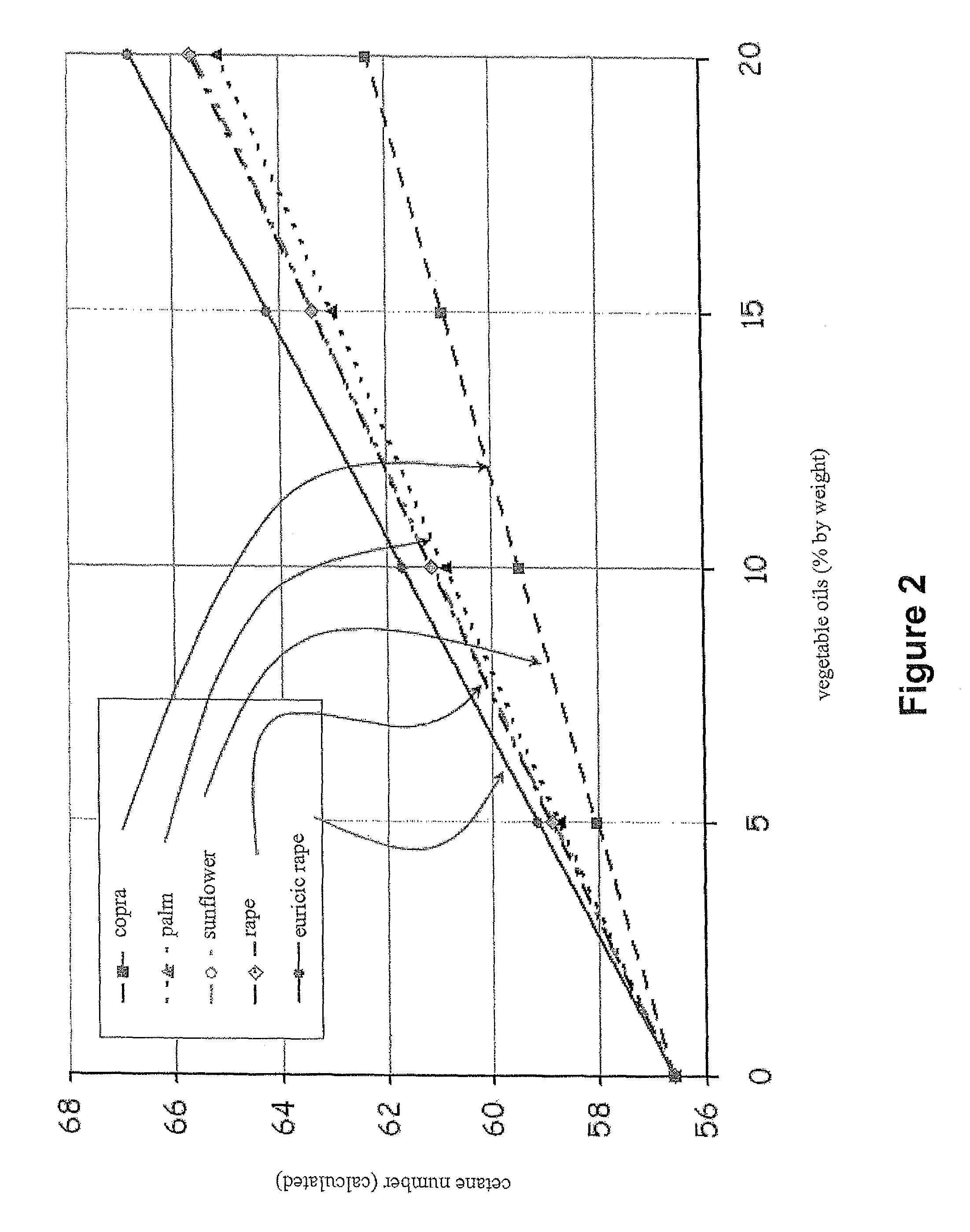Methods of hydrotreating a mixture made up of oils of animal or vegetable origin and of petroleum cuts with intermediate stripping
a technology of petroleum cut and mixture, which is applied in the direction of hydrocarbon oil cracking process, thermal non-catalytic cracking, etc., can solve the problems of significant cosub>2 /sub>emission, negative environmental effects, and the search for new renewable energy sources that can be integrated in the conventional refining and fuel production scheme, so as to reduce the cost of treatment and reduce the cost of hydrotreating. , the activity and stability of the hydrotr
- Summary
- Abstract
- Description
- Claims
- Application Information
AI Technical Summary
Benefits of technology
Problems solved by technology
Method used
Image
Examples
example 1
Single-Stage Method of Hydrotreating a Mixture Made Up of Vegetable Oils and of a Petroleum Cut
[0076]Co-treatment of a mixture made up of a straight-run gas oil and of a rape oil was carried out in a fixed-bed isothermal plant of descending flow type containing 50 cc catalyst of CoMo / Al2O3 type in dense loading.
[0077]The petroleum feed used is a straight-run gas oil from a Middle East crude whose characteristics are as follows:
[0078]
Density at 15° C.:0.8522Sulfur:1.35% by weightNitrogen:126 mg / kgSimulated distillation:PI:155° C.10% by weight:247° C.50% by weight:315° C.90% by weight:392° C.PF:444° C.
[0079]After in-situ sulfurization at 350° C. in the plant under pressure, carried out by adding 2% by weight of dimethylsulfide to the gas oil feed used, hydrotreatment was then performed for 140 h under the following operating conditions:
[0080]
Total pressure (MPa rel):4 MPaTemperature (° C.):350H2 / HC (Nl / l):320HSV (h−1):1.6
[0081]The properties of the effluents obtained are given in Tabl...
example 2
Treatment of the Vegetable Oil Alone
[0091]Hydrotreatment of a DNS grade quality rape oil was carried out in an isothermal plant consisting of a fixed bed of descending flow type containing 50 cc catalyst of NiMo / Al2O3 in dense loading.
[0092]The characteristics of the straight-run gas oil are identical to those of the gas oil of Example 1. After in-situ sulfurization carried out at 350° C. in the plant under pressure by addition of 2% by weight of dimethyldisulfide to the straight-run gas oil, the feed was modified for a feed consisting of 100% rape oil. The hydrotreatment test was then conducted under the following operating conditions for 150 h:
[0093]
Total pressure (MPa rel):4 and 2.5 MPaTemperature (° C.):320, 300, 280H2 / HC (Nl / l):320HSV (h−1):1.6
[0094]The hydrogen consumption and the amount of CO and CO2 formed are shown in Table 2.
[0095]
TABLE 2Two-stage hydrotreatment with inter-stage separation of a DNS grade qualityrape oilT = 320° C.T = 300° C.T = 300° C.T = 280° C.FeedP = 4 ...
example 3
Analysis of the Used Catalysts Used in Examples 1 and 2
[0099]The used catalysts described in Example 1 for a feed consisting of a hydrocarbon cut that contains no vegetable oil and for a feed comprising 15% vegetable oil were analyzed.
[0100]The results of the elementary analyses of these catalysts after toluene reflux washing and 1-hour drying in a vacuum drier are given in Table 3. It can be observed that the introduction of rape oil in the feed accelerates coking of the catalyst used and that the S / Mo ratio that characterizes the stability of the sulfide phase decreases. Aging of the catalyst is thus accelerated by the presence of vegetable oil in comixture.
[0101]The specific surface area of these used catalysts was also measured by means of the BET method. It was observed that the introduction of rape oil in the feed leads to a decrease in the specific surface area of the used catalysts.
[0102]The characteristics of the used catalyst described in Example 2 are also given in Table ...
PUM
| Property | Measurement | Unit |
|---|---|---|
| total pressure | aaaaa | aaaaa |
| temperature | aaaaa | aaaaa |
| total pressure | aaaaa | aaaaa |
Abstract
Description
Claims
Application Information
 Login to View More
Login to View More - R&D
- Intellectual Property
- Life Sciences
- Materials
- Tech Scout
- Unparalleled Data Quality
- Higher Quality Content
- 60% Fewer Hallucinations
Browse by: Latest US Patents, China's latest patents, Technical Efficacy Thesaurus, Application Domain, Technology Topic, Popular Technical Reports.
© 2025 PatSnap. All rights reserved.Legal|Privacy policy|Modern Slavery Act Transparency Statement|Sitemap|About US| Contact US: help@patsnap.com



